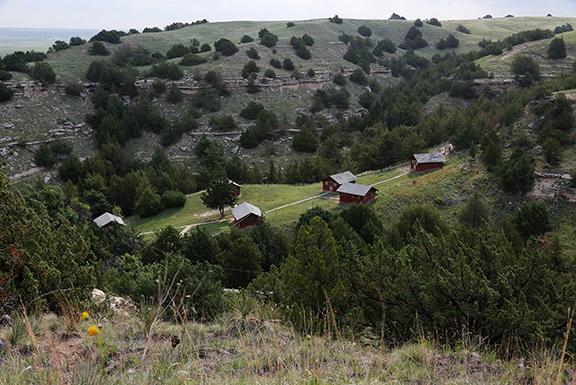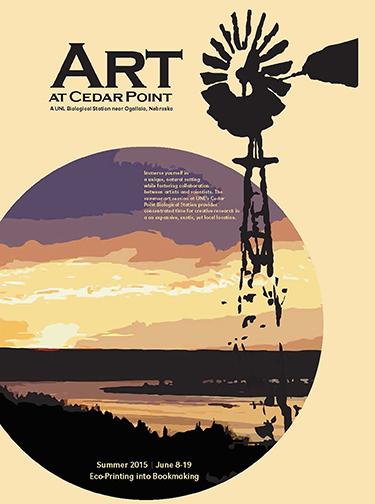
Art at Cedar Point offered this summer
calendar icon26 Feb 2015

Eco-Printing into Bookmaking (ARTP183, an ACE 7 course) will be taught by Cather Professor of Art Karen Kunch June 8-19.
The course is a creative and immersive two-week field school art experience.
“We will learn printing processes on site and experiment with ‘eco’ techniques using natural materials, such as ink, rust, stains, weathering actions, stencils, over printed layers, that all reference nature for an interpretation of resources and specimens,” Kunc said. “Through these printing processes, a variety of information pages will be made that are the content of handmade books that serve to record actions and phenomenon, a history of encounters, to develop a ‘sense of place.’”
A non-refundable $460 enrollment deposit covers the cost of room and board and locks in your spot in the course. (If you live locally near Ogallala and do not need housing, the enrollment deposit is $245.) In addition to the enrollment deposit, students pay tuition and a special course fee of $50. UNL Summer enrollment begins March 9.
An Artist in Residence program is also available either July 5-19 (two weeks) or July 5-12 (one week). The residency program is open to arts and creative writing faculty at Nebraska colleges and universities, K-12 art teachers in Nebraska public and private schools and current students in UNL’s MFA program.
The cost for the residency is $230 per person per week, and the deadline for applications is March 20. Proposals will be reviewed for selection, with announcement of acceptance by April 10.
Cedar Point Biological Station is a University of Nebraska field research facility and experimental classroom located near Lake McConaughy and Ogallala, Nebraska. The station is in the heart of the western high plains, near the juncture of tall grass an short prairie grass, on the south edge of the Sandhills and in the North Platte River valley.
Kunc says Jon Garbisch, the associate director of Cedar Point Biological Station, approached the Department of Art and Art History about teaching courses there.
“It just seemed like a natural fit to do something out there,” she said. “Many of us are eager to immerse ourselves into the landscape and in the unique setting of this place, which has been established for 40 years.”
Last year, a photography course for non-majors was offered during the first summer of the Art at Cedar Point program. Other mediums may be offered in future years.
“We just need the right creative artists who are adaptable to a space, who can bring their materials and would enjoy the camaraderie that is part of the atmosphere there,” Kunc said.
Students will benefit from the concentrated course.
“They won’t have any other distractions and that can really foster how they learn to research and their visual voice,” Kunc said. “They’ll also have great models of other researchers around.”
For more information on the summer course or the residency program, visit https://go.unl.edu/cedarpoint.